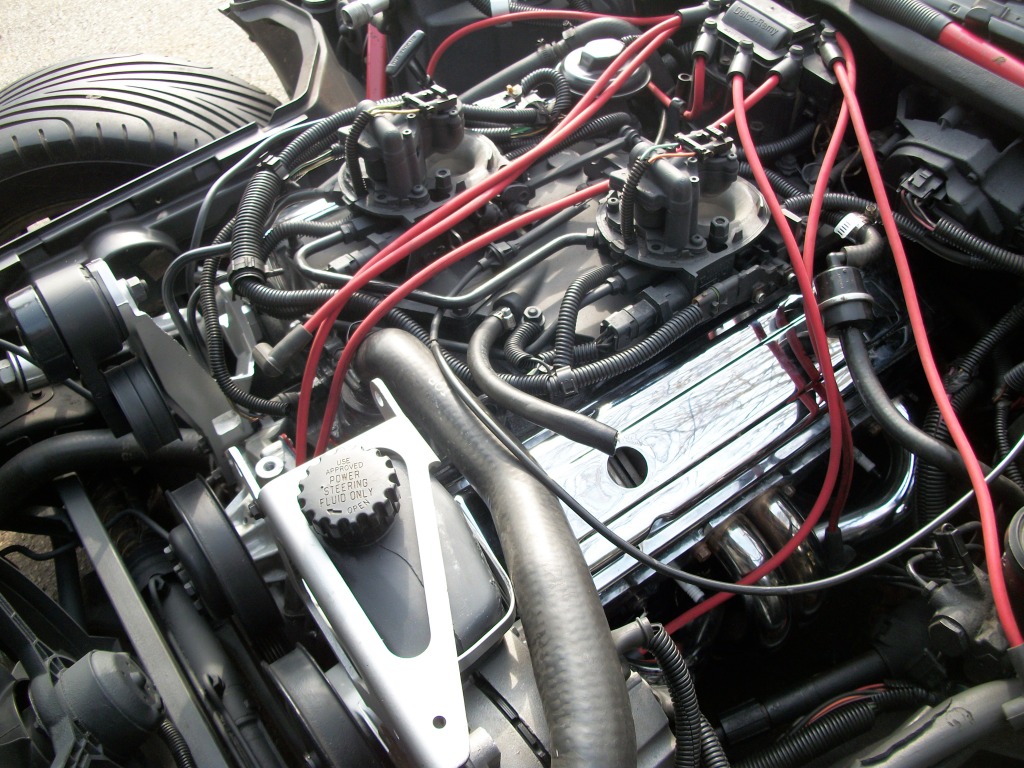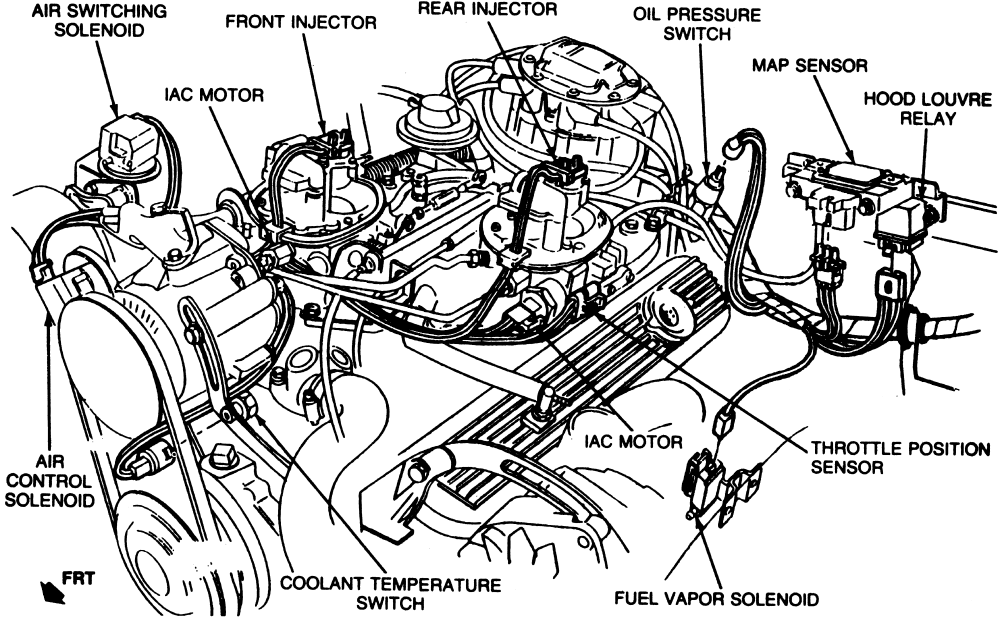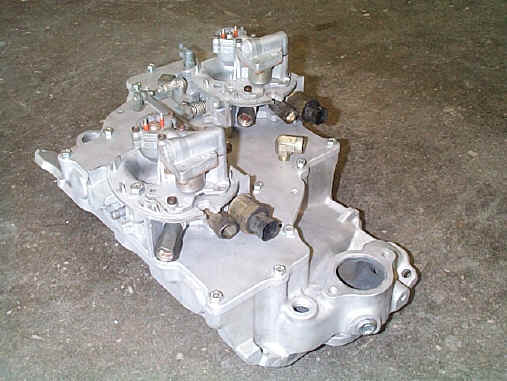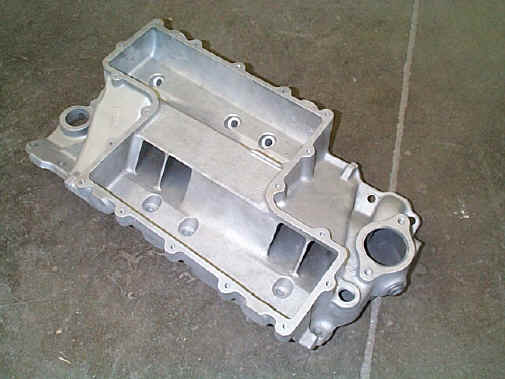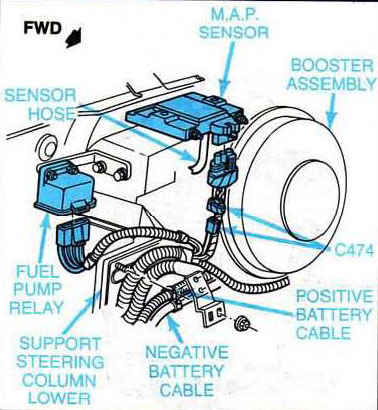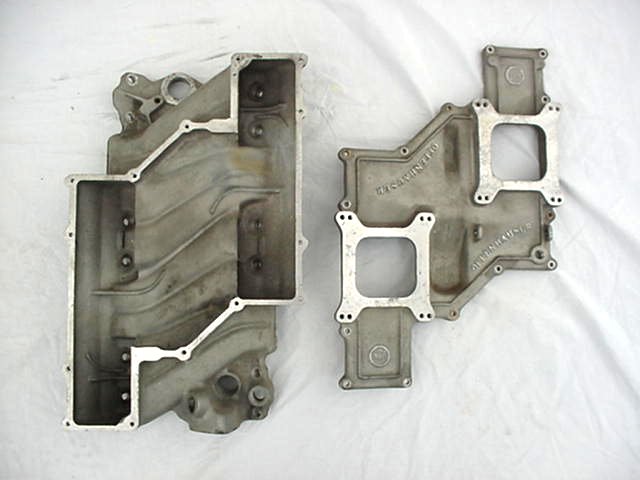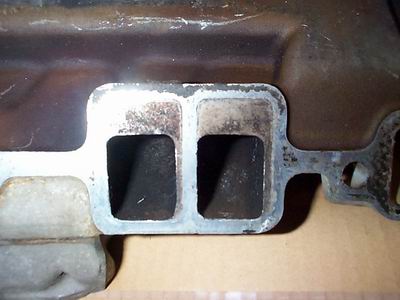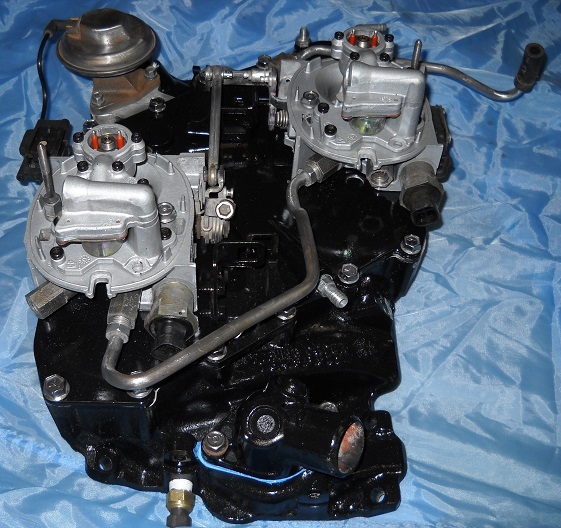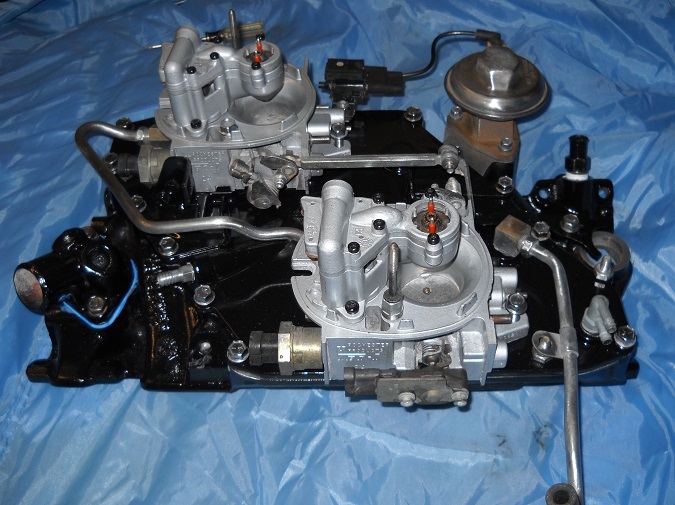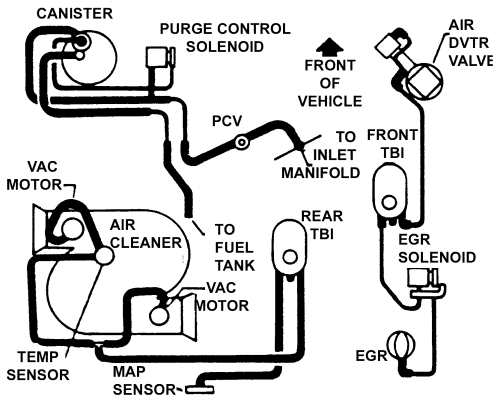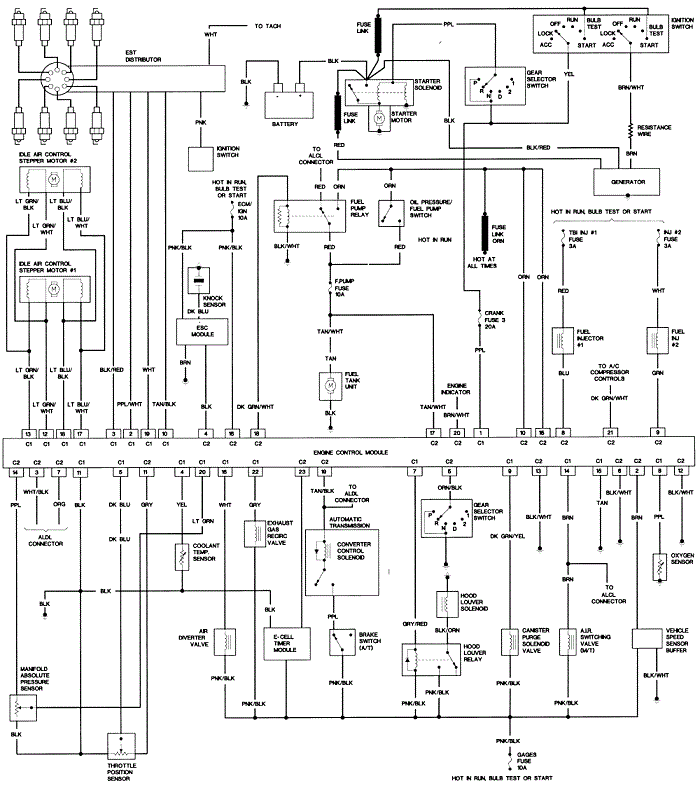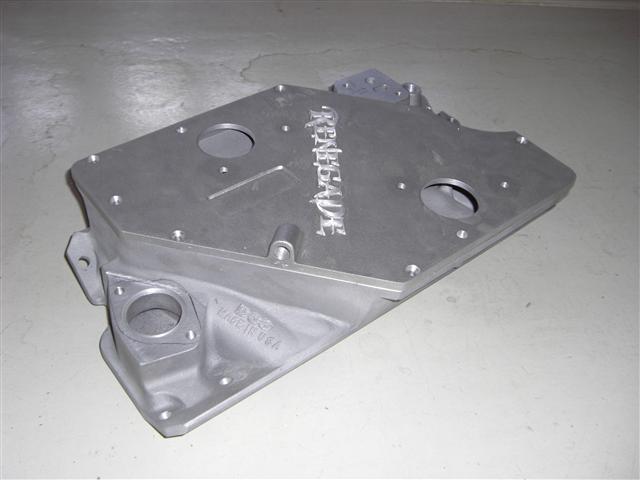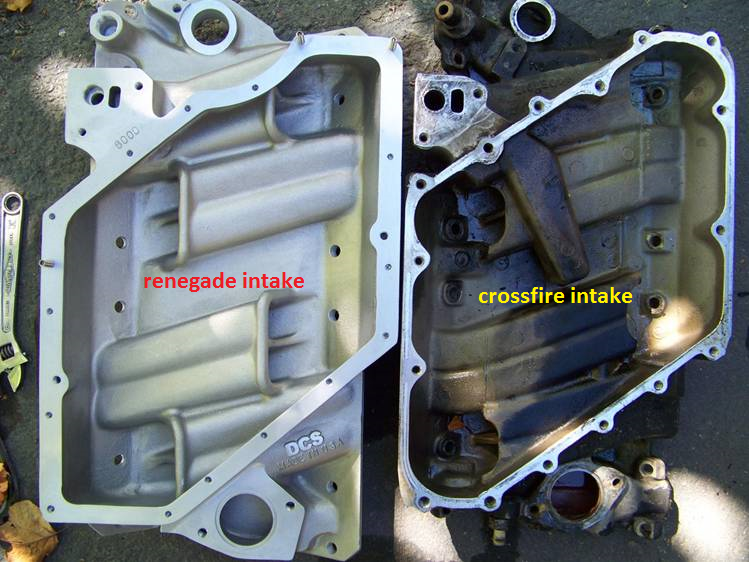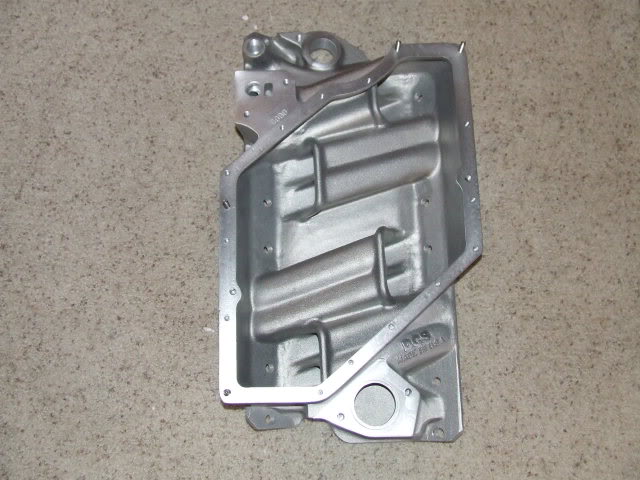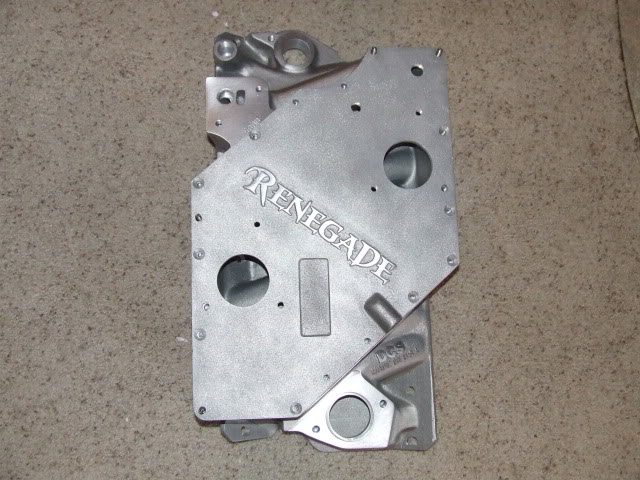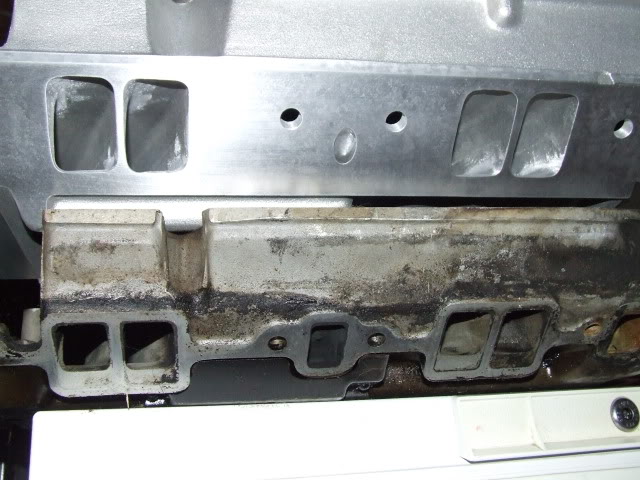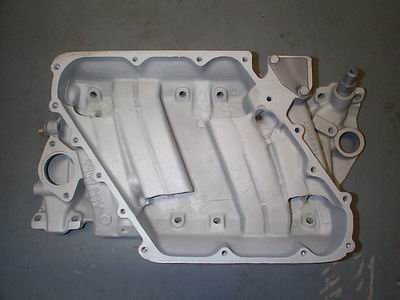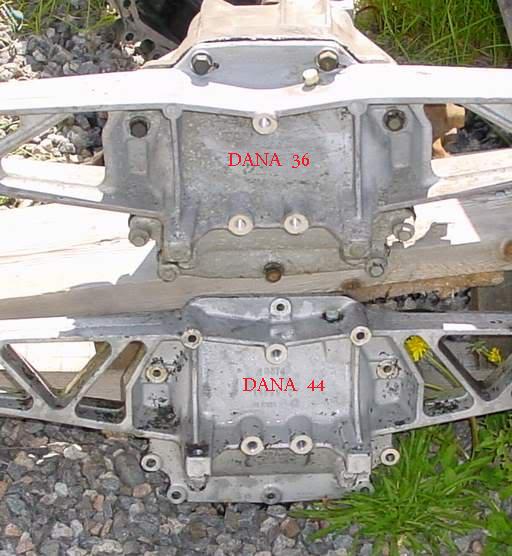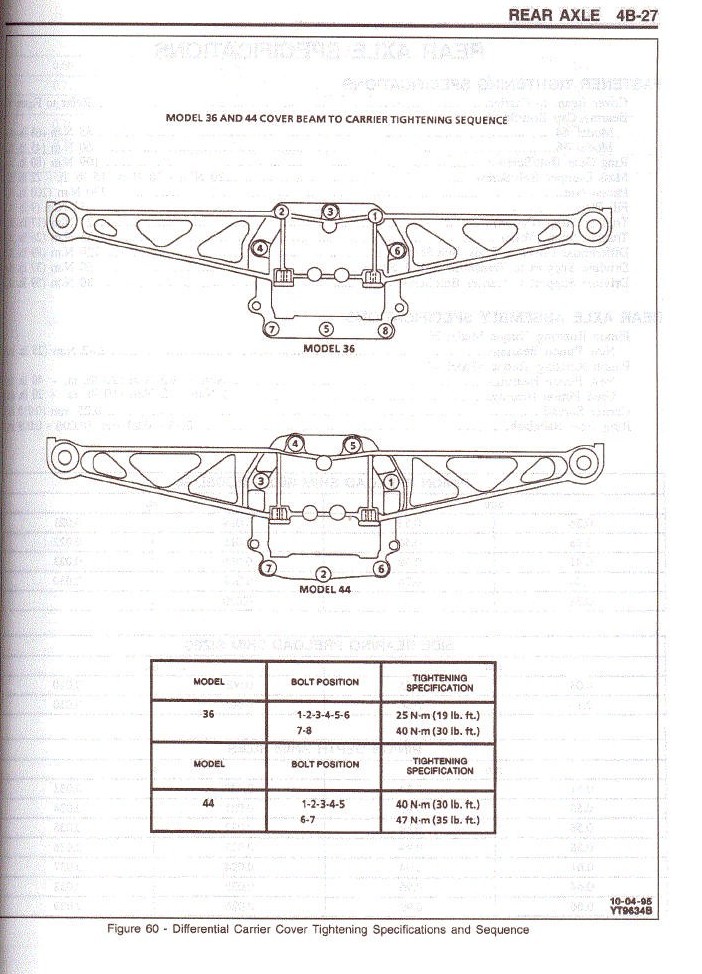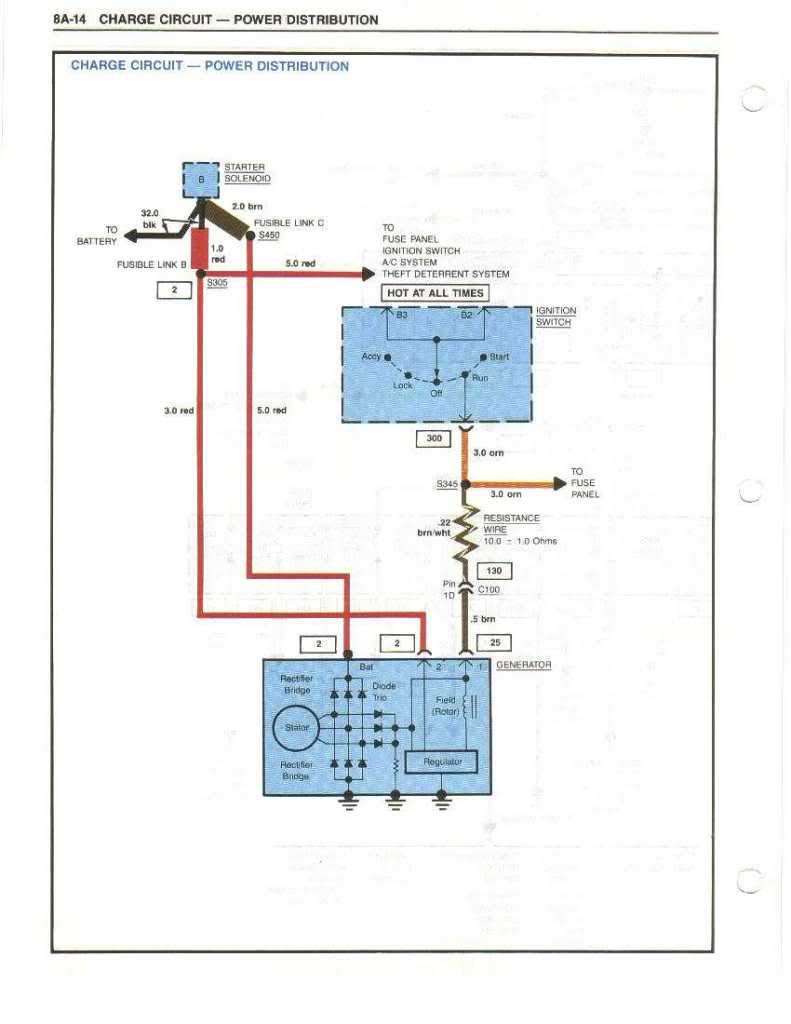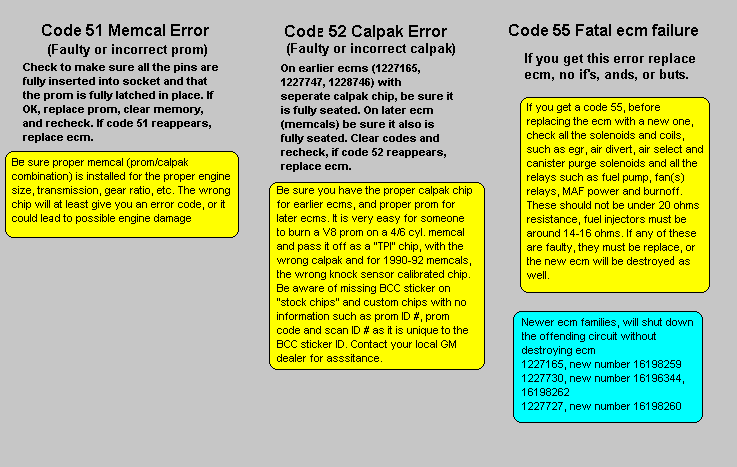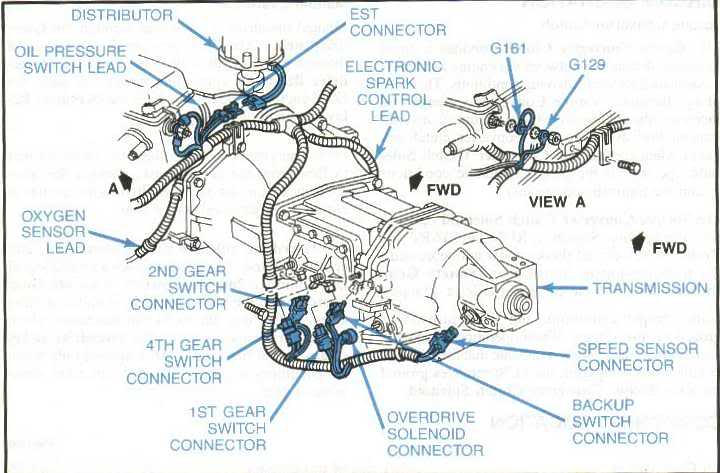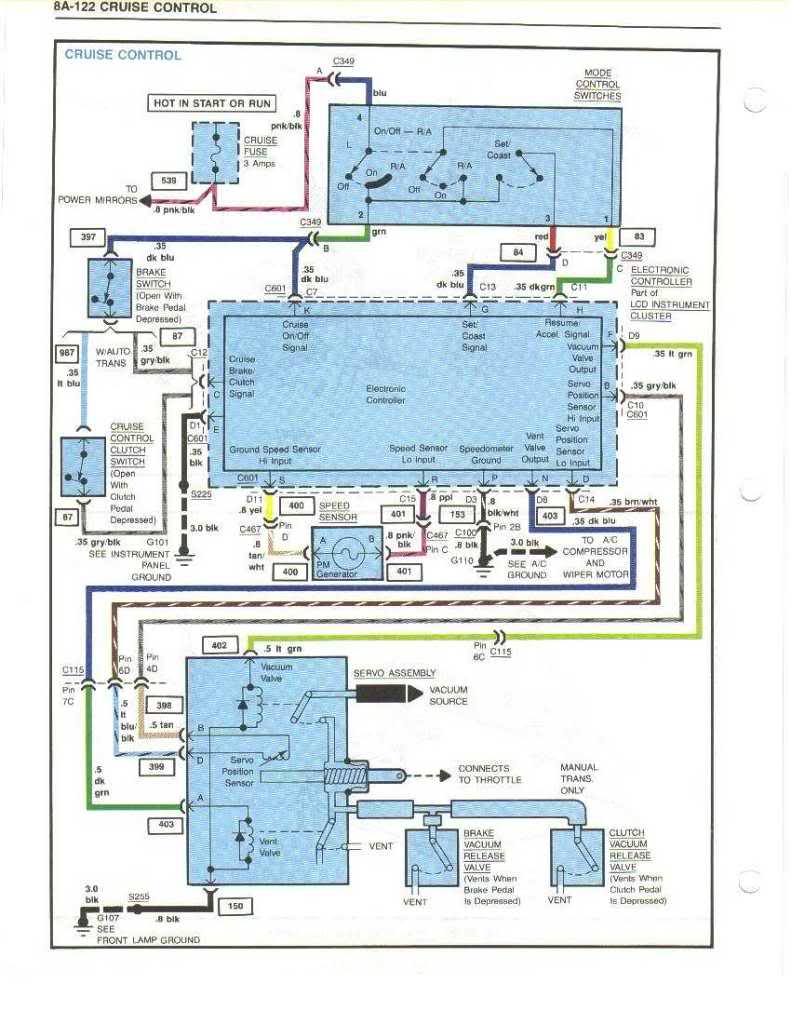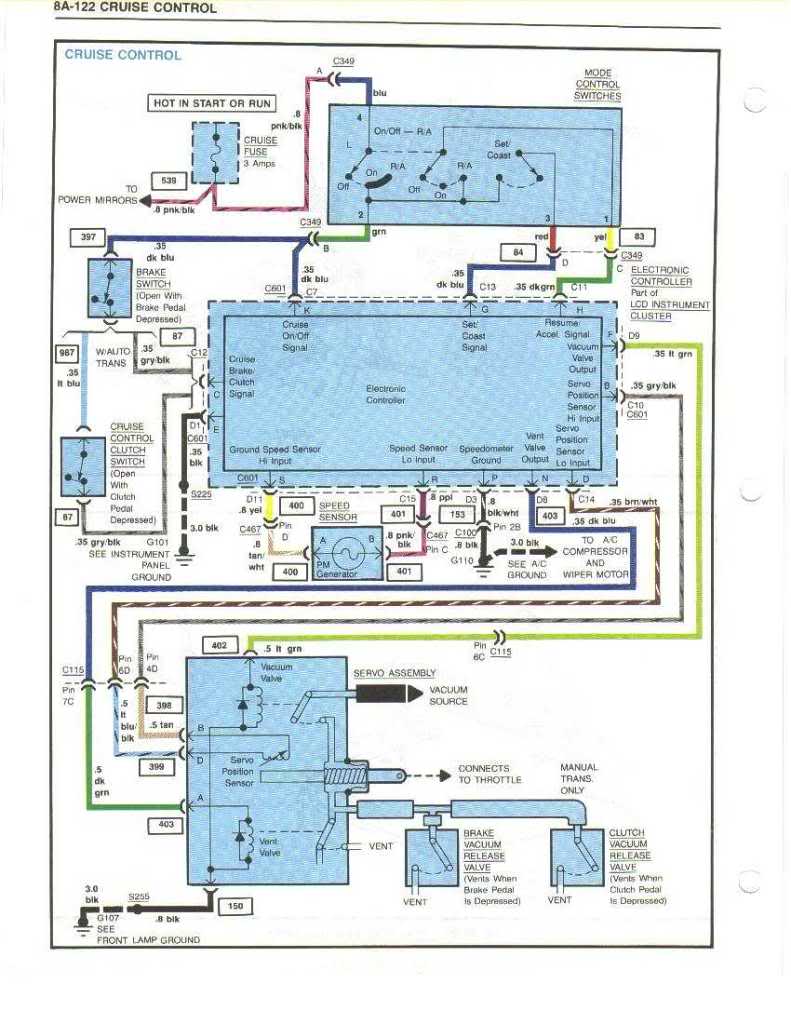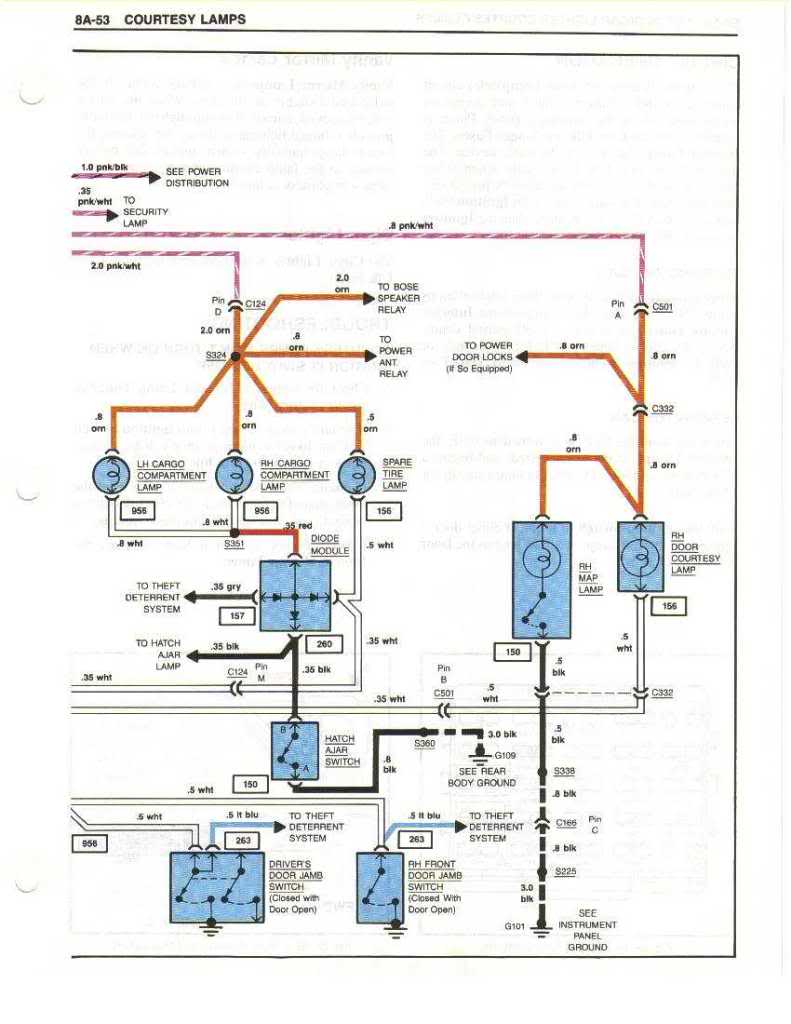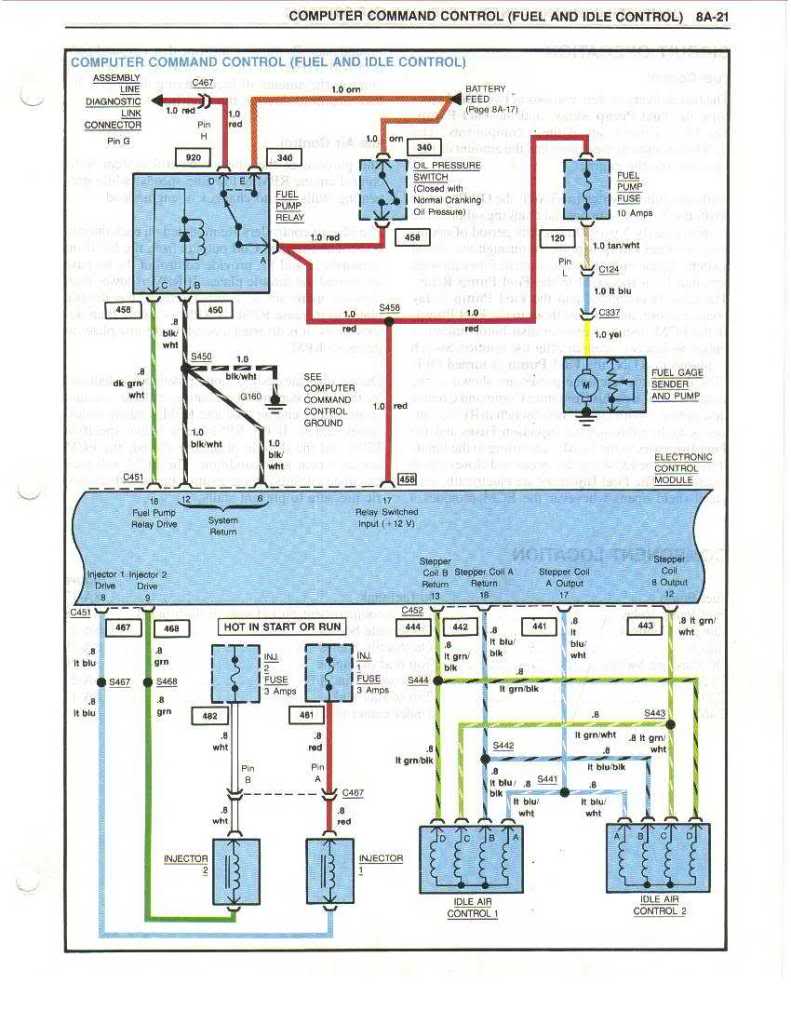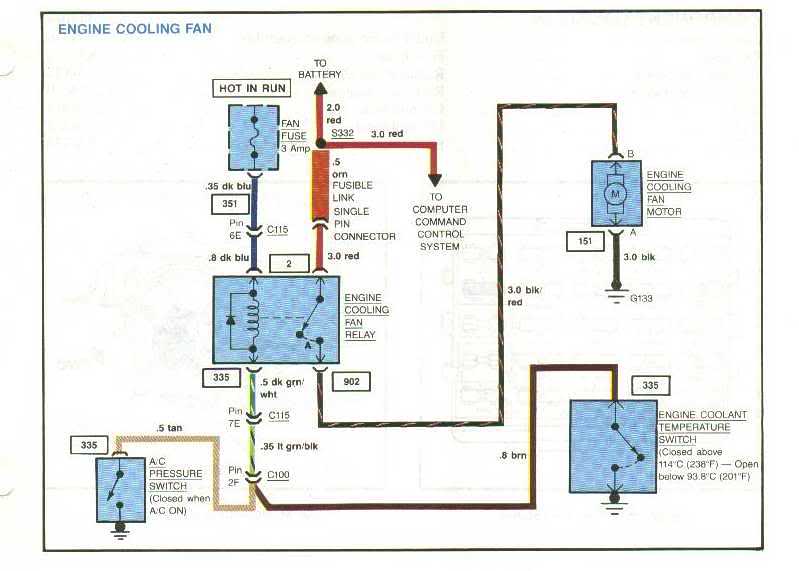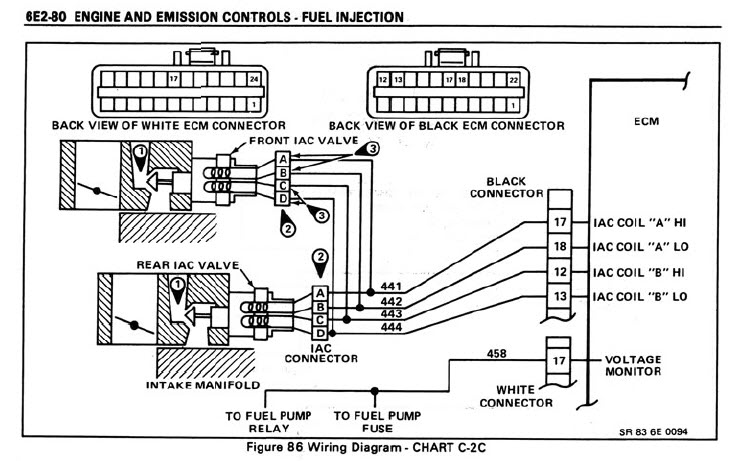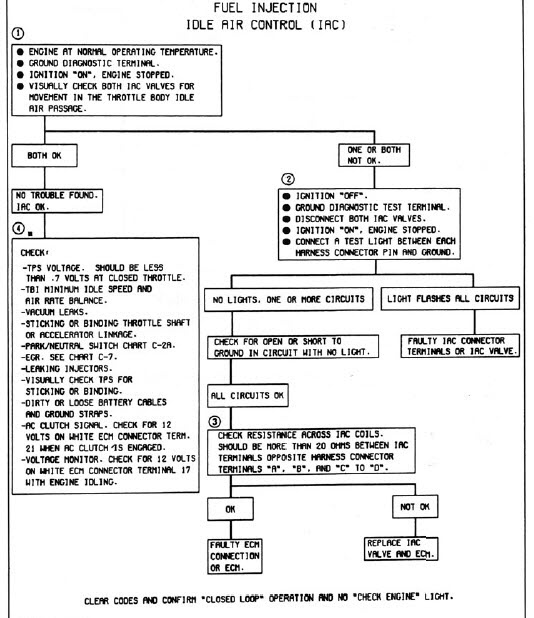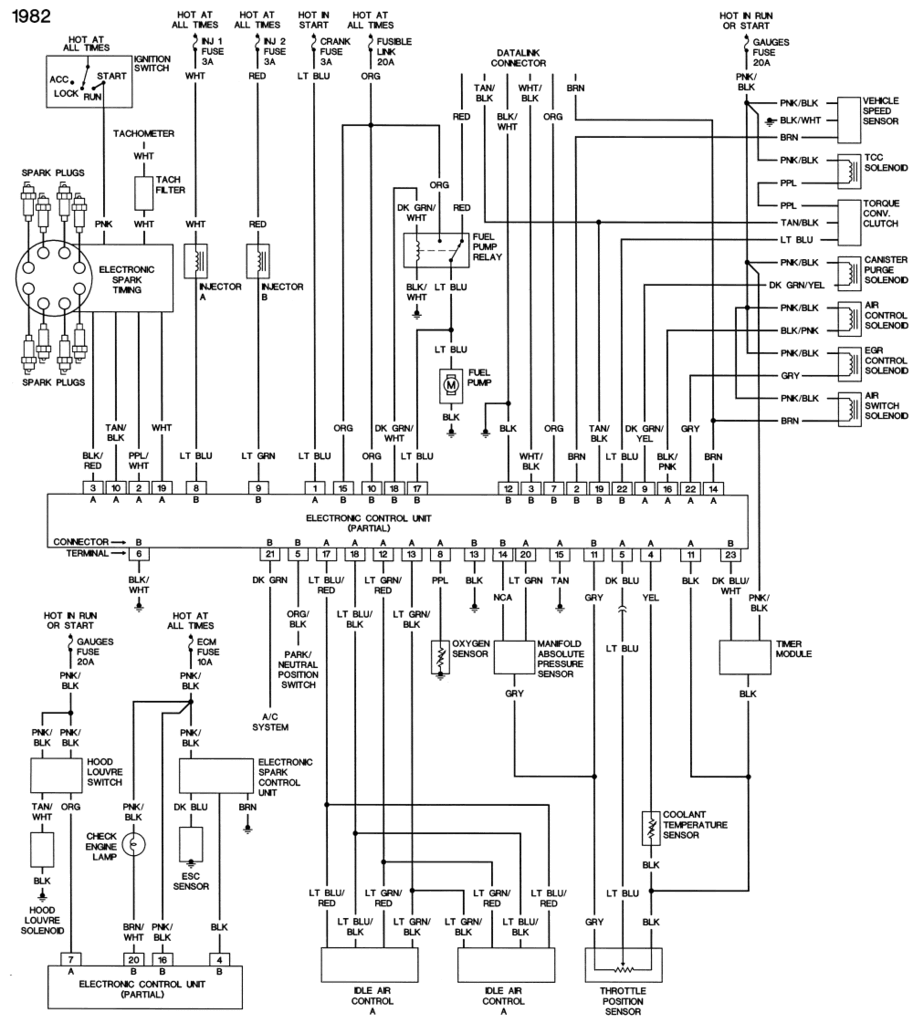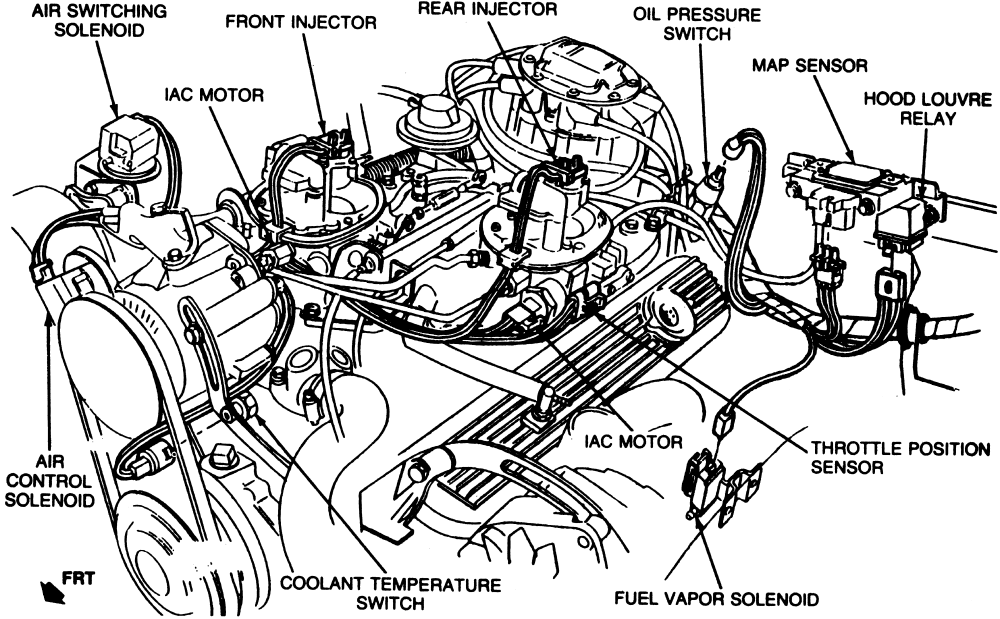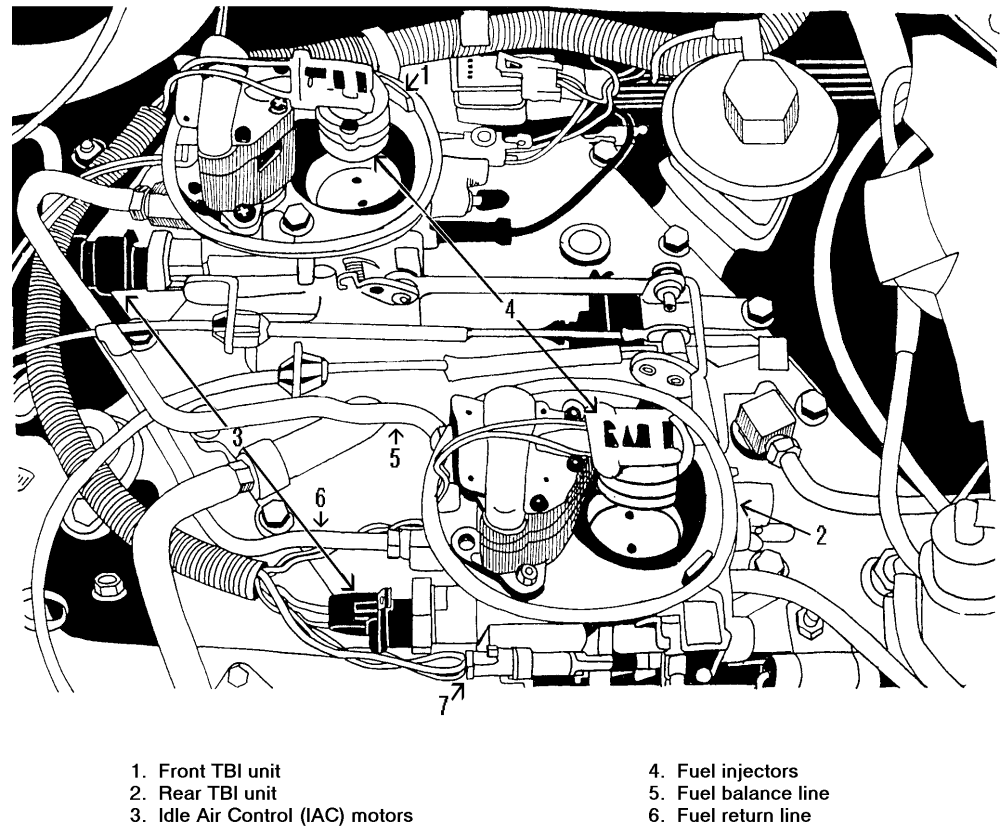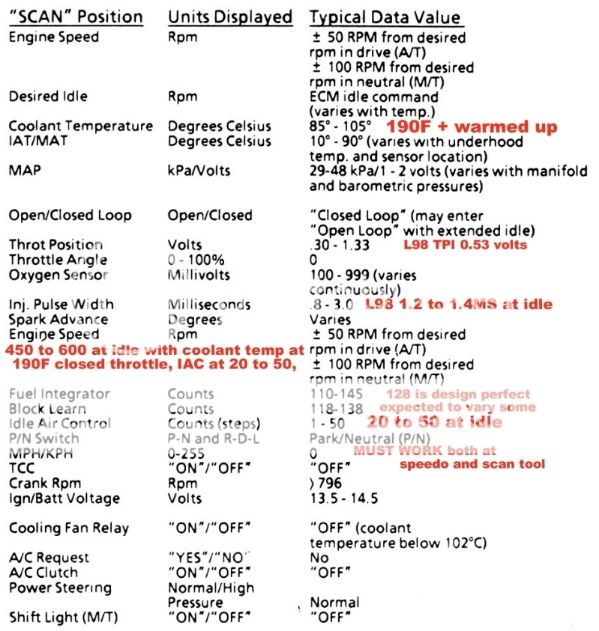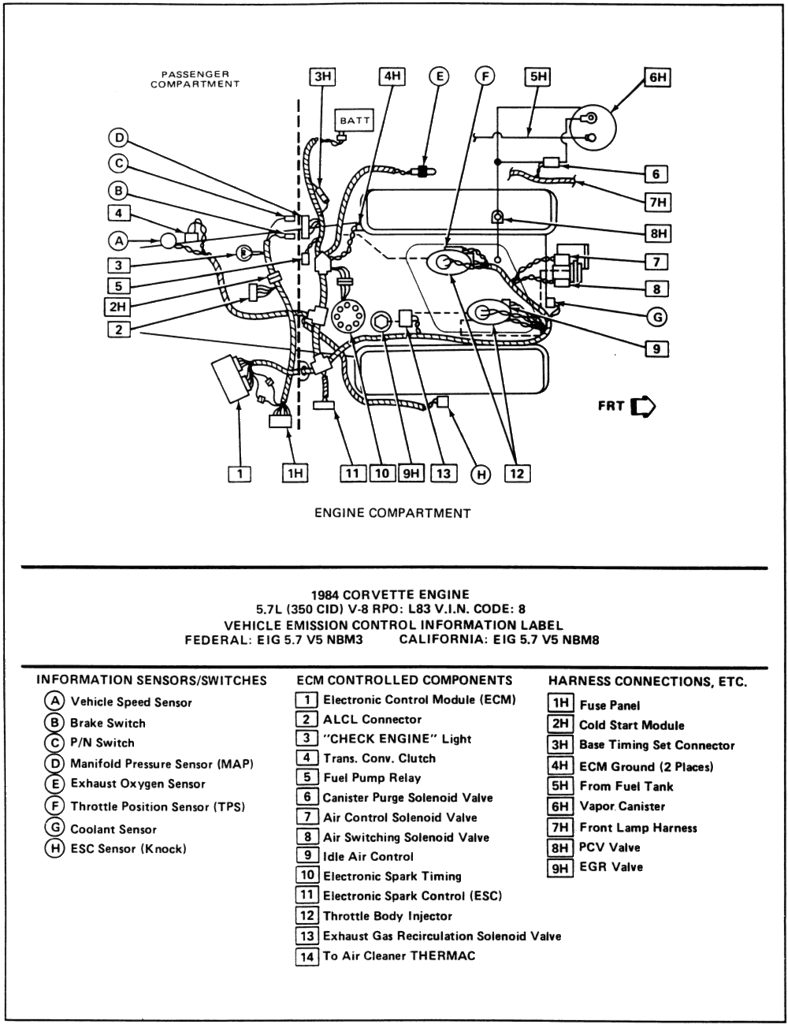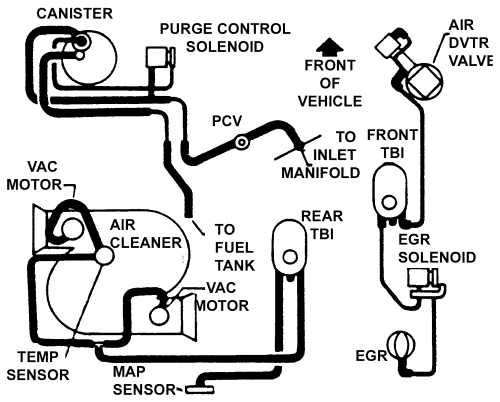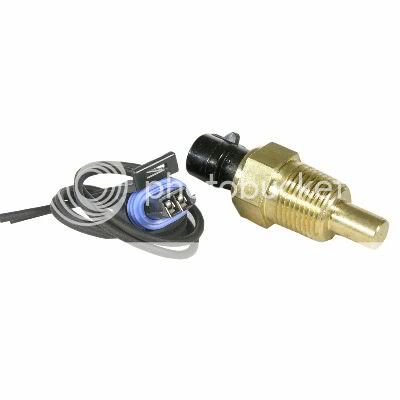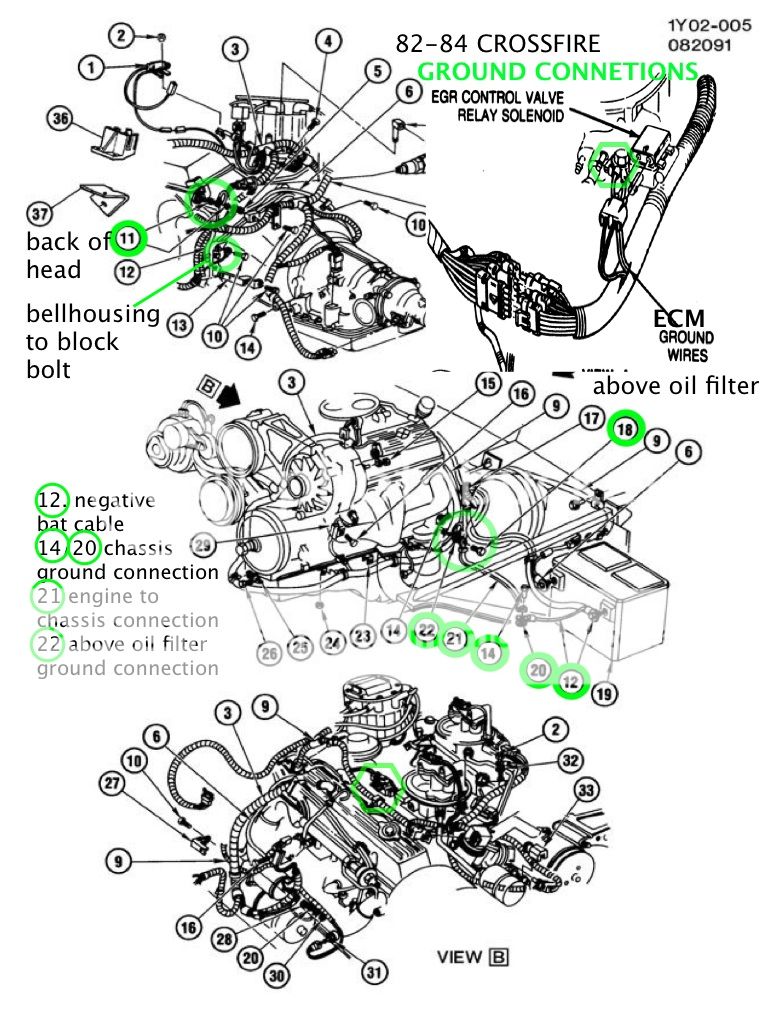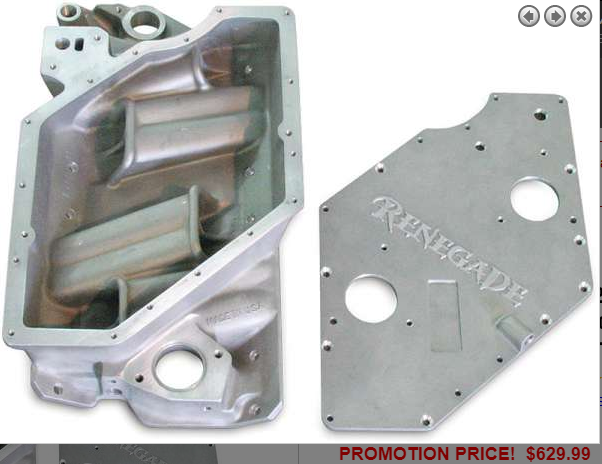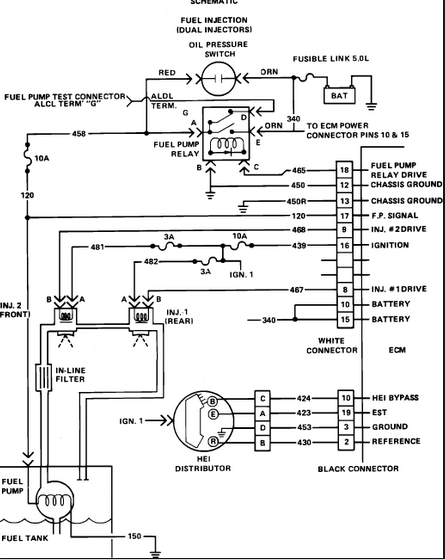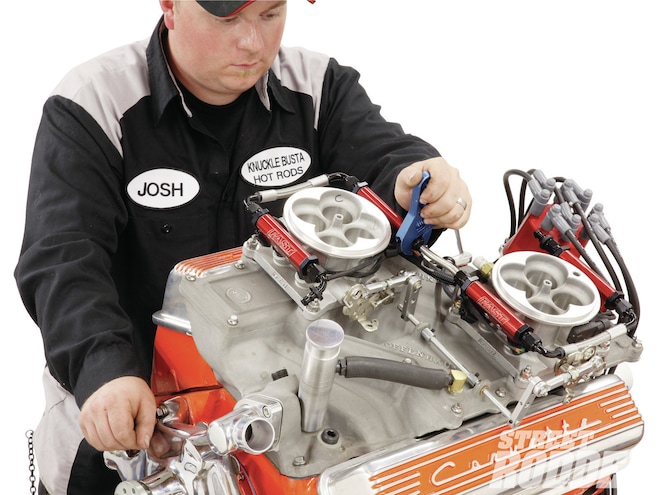Got these pics from another forum; they are of the new Renegade manifold for the CFI installed on a 1984.
The following is a statement from the makers DCS:
Please note that we are not releasing any internal pics or technical specs at this time. The reason for this is the design is not 100% finalized - we are still tweaking things. But here is some basic info.
* Runner cross sectional area is presently approx 30% larger.
* There is a 20% taper from inlet to outlet.
* True Crossram design style with optimized runner configuration but modified for our application.
* The outlet is slightly smaller than a 1205 gasket. This is done to make sure there are no leaks and a good seal is obtained.
* Plenum area is 20% larger than stock.
* True OE design on the top plate. All brackets are in their stock locations. Just bolt it on and everything is located where it should be.
* Same overall height as the stock manifold.
* EGR is built in if it is needed.
* No issues with removing valve covers.
http://www.technovelocity.com/chevyhack ... olish.html
462624
350
76-87
1.94/1.50 2.02/1.60

heads tend to crack if over heated or incorrectly torqued
if you have zero deck to head distance I'd suggest a .040-.042 thick head gasket should be used
for a 9.3 compression, 327 with a 3.08 rear gear, and auto trans, Id suggest a cam like a crane 114132
https://www.summitracing.com/parts/crn-114132
with the correct matched components 350 hp should be doable, btw mild port and bowl area clean-up can allow these heads to have improved flow, they will never be a great choice but they can be improved
use of long tube headers a low restriction exhaust and a cam with a bit more lift and duration can help compensate for the restrictive ports some what.
I would certainly suggest a decent performance dual plane intake be selected,and port matched, and you certainly don,t need to spend a fortune
something like this easily improves flow if matched up correctly
https://www.summitracing.com/parts/wnd-8150
http://www.usaperform.com/sbc-torqu...-lifter-kit-275-deg-278-deg-435-455-lift.html
http://garage.grumpysperformance.com/index.php?threads/refresh-1982-crossfire-vette.14173/
http://garage.grumpysperformance.com/index.php?threads/porting-can-help.462/
http://garage.grumpysperformance.co...-by-step-guide-with-pictures.5378/#post-60990
http://garage.grumpysperformance.co...lsa-effects-your-compression-torque-dcr.1070/
http://garage.grumpysperformance.com/index.php?threads/port-speeds-and-area.333/
We decided to use my 84 as the mule because of the hood clearance concerns. 82 Vettes are roomier in the engine compartment.
YOU MAY WANT TO READ THRU THESE LINKs
http://www.thecubestudio.com/CrossfireT ... ration.htm
http://www.thecubestudio.com/CrossfireT ... ancing.htm
http://www.thecubestudio.com/CrossfireT ... ration.htm
http://crossfireinjection.net/DCS News.html
http://www.technovelocity.com/chevyhack ... olish.html

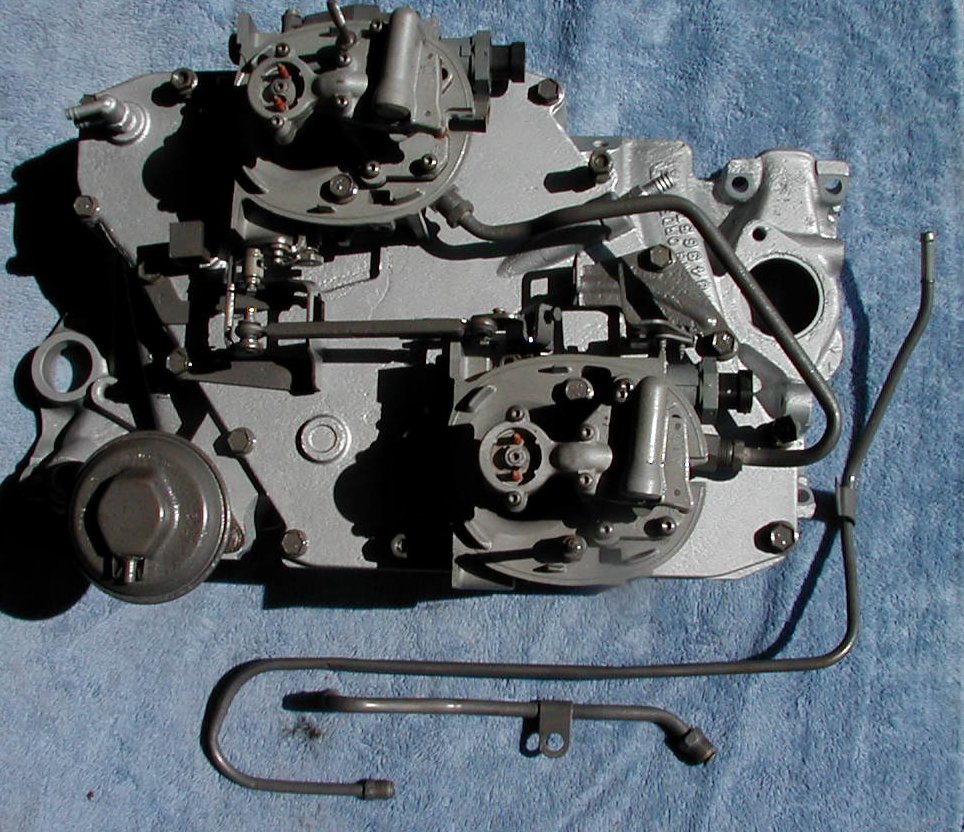
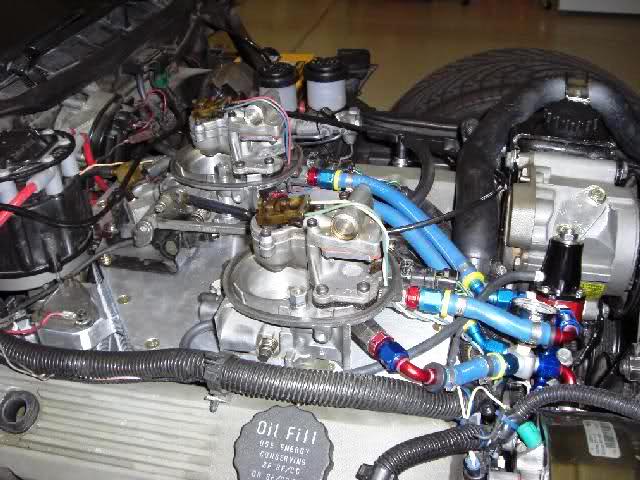
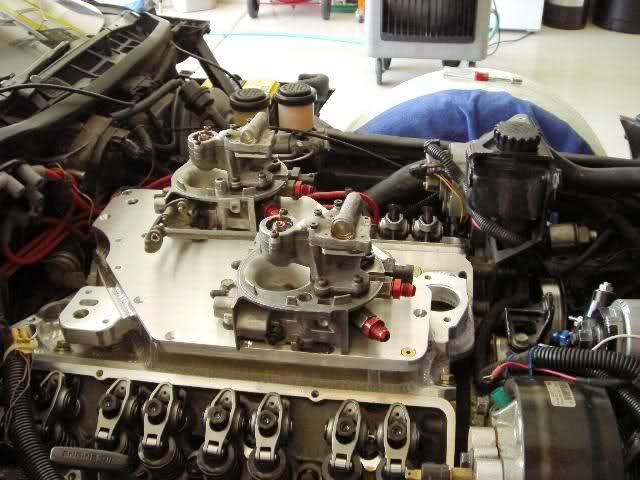
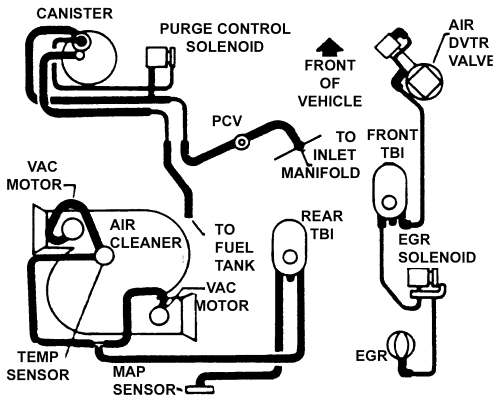
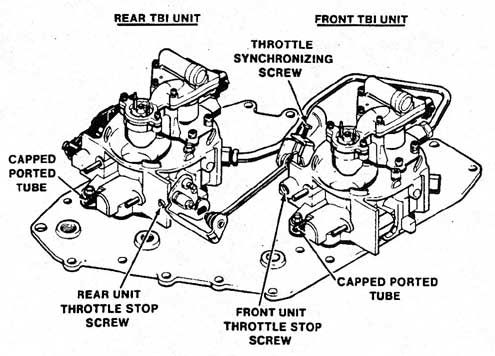
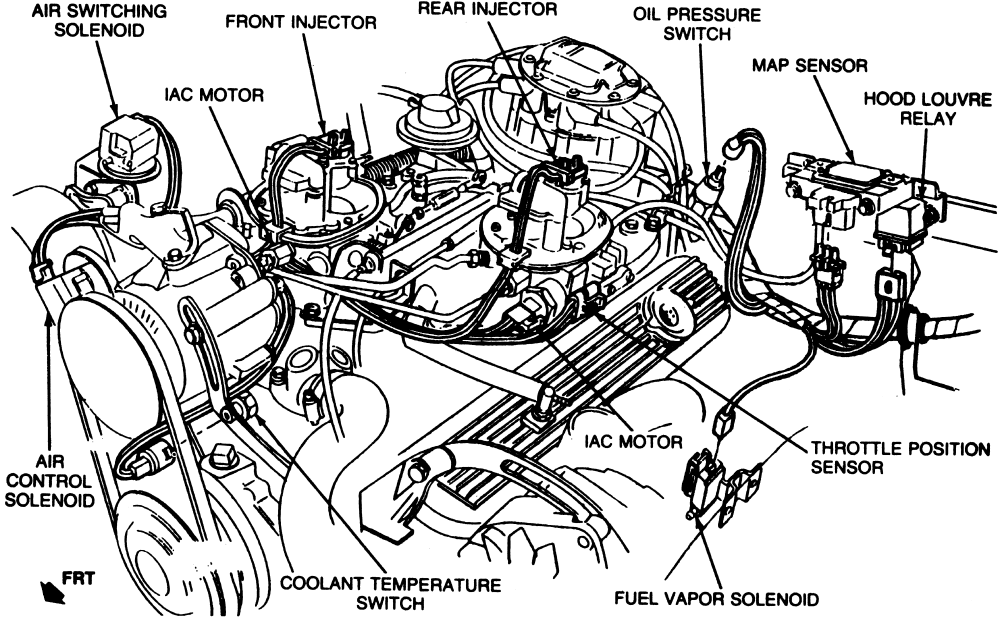
this may interest you
http://www.ecklerscorvette.com/corv...nifold-crossfire-injection-1982-and-1984.html
THE HEADS ON THE 1984 cross fire corvettes are pathetic also
Heads: Iron, casting number 462624
Chamber Volume: 76cc
Intake Valve size: 1.94"
Exhaust Valve size: 1.50"
Intake Port Volume: 158cc
Flow Numbers:
.100
44/41
93.2%
.200
101/82
81.2%
.300
155/125
80.6%
.400
182/137
75.3%
.500
196/140
71.4%
Average
159/121
76.3%
NOW COMPARE THOSe NUMBERS
viewtopic.php?f=32&t=5521&p=16619&hilit=head+flow+numbers#p16619
viewtopic.php?f=52&t=333&p=27234&hilit=head+flow+numbers#p27234
viewtopic.php?f=52&t=462&p=24466&hilit=head+flow+numbers#p24466
viewtopic.php?f=52&t=5078&p=18935&hilit=head+flow+numbers#p18935
viewtopic.php?f=52&t=401&p=17237&hilit=head+flow+numbers#p17237
viewtopic.php?f=52&t=5364&p=16066&hilit=head+flow+numbers#p16066
http://www.airflowresearch.com/articles ... 5/A-P1.htm
viewtopic.php?f=52&t=2630&p=13142&hilit=head+flow+numbers#p13142
viewtopic.php?f=52&t=1563&p=11967&hilit=head+flow+numbers#p11967
viewtopic.php?f=52&t=4221&p=11119&hilit=head+flow+numbers#p11119
viewtopic.php?f=52&t=8460&p=32923#p32923
viewtopic.php?f=52&t=322&p=9895&hilit=head+flow+numbers#p9895
if you have a cross fire 1984 corvette with dual throttle body injection your dealing with what is eventually a very restrictive set of heads fed by an extremely restrictive intake on an engine thats designed to operate at under 4000rpm, that makes a factory rated power curve under 220 hp.
your original cross fire throttle body injection intake was and is VERY RESTRICTIVE, there are far better intake manifolds, cylinder heads and cams available, to upgrade a cross fire corvette. , for both upgrading the TBI or swapping to a carburetor fueled engine
READ A FEW LINKS, and sub links, it should take you a few hours to read most of the related info but it could save you weeks of work and a good deal of ca$h
viewtopic.php?f=32&t=1148&p=2333&hilit=1984+crossfire#p2333
viewtopic.php?f=32&t=1401
viewtopic.php?f=32&t=596
viewtopic.php?f=32&t=2697
viewtopic.php?f=32&t=10096&p=39656&hilit=shop+manual#p39656
IF YOU WANT A CROSS FIRE CORVETTES ENGINE TO BREATH YOULL NEED TO MAKE CHANGES
http://www.crossfireinjection.net/renegade.htm
renegade intake
http://www.cranecams.com/product/cart.php?m=product_detail&p=23790
mild cam
better heads
http://www.airflowresearch.com/index.php?cPath=24_117
roller rockers
http://www.ebay.com/itm/Scorpion-Ro...-16-/391143932929?hash=item5b11fec401&vxp=mtr
The following is a statement from the makers DCS:
Please note that we are not releasing any internal pics or technical specs at this time. The reason for this is the design is not 100% finalized - we are still tweaking things. But here is some basic info.
* Runner cross sectional area is presently approx 30% larger.
* There is a 20% taper from inlet to outlet.
* True Crossram design style with optimized runner configuration but modified for our application.
* The outlet is slightly smaller than a 1205 gasket. This is done to make sure there are no leaks and a good seal is obtained.
* Plenum area is 20% larger than stock.
* True OE design on the top plate. All brackets are in their stock locations. Just bolt it on and everything is located where it should be.
* Same overall height as the stock manifold.
* EGR is built in if it is needed.
* No issues with removing valve covers.
http://www.technovelocity.com/chevyhack ... olish.html
462624
350
76-87
1.94/1.50 2.02/1.60

heads tend to crack if over heated or incorrectly torqued
if you have zero deck to head distance I'd suggest a .040-.042 thick head gasket should be used
for a 9.3 compression, 327 with a 3.08 rear gear, and auto trans, Id suggest a cam like a crane 114132
https://www.summitracing.com/parts/crn-114132
with the correct matched components 350 hp should be doable, btw mild port and bowl area clean-up can allow these heads to have improved flow, they will never be a great choice but they can be improved
use of long tube headers a low restriction exhaust and a cam with a bit more lift and duration can help compensate for the restrictive ports some what.
I would certainly suggest a decent performance dual plane intake be selected,and port matched, and you certainly don,t need to spend a fortune
something like this easily improves flow if matched up correctly
https://www.summitracing.com/parts/wnd-8150
http://www.usaperform.com/sbc-torqu...-lifter-kit-275-deg-278-deg-435-455-lift.html
http://garage.grumpysperformance.com/index.php?threads/refresh-1982-crossfire-vette.14173/
http://garage.grumpysperformance.com/index.php?threads/porting-can-help.462/
http://garage.grumpysperformance.co...-by-step-guide-with-pictures.5378/#post-60990
http://garage.grumpysperformance.co...lsa-effects-your-compression-torque-dcr.1070/
http://garage.grumpysperformance.com/index.php?threads/port-speeds-and-area.333/
We decided to use my 84 as the mule because of the hood clearance concerns. 82 Vettes are roomier in the engine compartment.
YOU MAY WANT TO READ THRU THESE LINKs
http://www.thecubestudio.com/CrossfireT ... ration.htm
http://www.thecubestudio.com/CrossfireT ... ancing.htm
http://www.thecubestudio.com/CrossfireT ... ration.htm
http://crossfireinjection.net/DCS News.html
http://www.technovelocity.com/chevyhack ... olish.html







this may interest you
http://www.ecklerscorvette.com/corv...nifold-crossfire-injection-1982-and-1984.html
THE HEADS ON THE 1984 cross fire corvettes are pathetic also
Heads: Iron, casting number 462624
Chamber Volume: 76cc
Intake Valve size: 1.94"
Exhaust Valve size: 1.50"
Intake Port Volume: 158cc
Flow Numbers:
.100
44/41
93.2%
.200
101/82
81.2%
.300
155/125
80.6%
.400
182/137
75.3%
.500
196/140
71.4%
Average
159/121
76.3%
NOW COMPARE THOSe NUMBERS
viewtopic.php?f=32&t=5521&p=16619&hilit=head+flow+numbers#p16619
viewtopic.php?f=52&t=333&p=27234&hilit=head+flow+numbers#p27234
viewtopic.php?f=52&t=462&p=24466&hilit=head+flow+numbers#p24466
viewtopic.php?f=52&t=5078&p=18935&hilit=head+flow+numbers#p18935
viewtopic.php?f=52&t=401&p=17237&hilit=head+flow+numbers#p17237
viewtopic.php?f=52&t=5364&p=16066&hilit=head+flow+numbers#p16066
http://www.airflowresearch.com/articles ... 5/A-P1.htm
viewtopic.php?f=52&t=2630&p=13142&hilit=head+flow+numbers#p13142
viewtopic.php?f=52&t=1563&p=11967&hilit=head+flow+numbers#p11967
viewtopic.php?f=52&t=4221&p=11119&hilit=head+flow+numbers#p11119
viewtopic.php?f=52&t=8460&p=32923#p32923
viewtopic.php?f=52&t=322&p=9895&hilit=head+flow+numbers#p9895
if you have a cross fire 1984 corvette with dual throttle body injection your dealing with what is eventually a very restrictive set of heads fed by an extremely restrictive intake on an engine thats designed to operate at under 4000rpm, that makes a factory rated power curve under 220 hp.
your original cross fire throttle body injection intake was and is VERY RESTRICTIVE, there are far better intake manifolds, cylinder heads and cams available, to upgrade a cross fire corvette. , for both upgrading the TBI or swapping to a carburetor fueled engine
READ A FEW LINKS, and sub links, it should take you a few hours to read most of the related info but it could save you weeks of work and a good deal of ca$h
viewtopic.php?f=32&t=1148&p=2333&hilit=1984+crossfire#p2333
viewtopic.php?f=32&t=1401
viewtopic.php?f=32&t=596
viewtopic.php?f=32&t=2697
viewtopic.php?f=32&t=10096&p=39656&hilit=shop+manual#p39656
IF YOU WANT A CROSS FIRE CORVETTES ENGINE TO BREATH YOULL NEED TO MAKE CHANGES
http://www.crossfireinjection.net/renegade.htm
renegade intake
http://www.cranecams.com/product/cart.php?m=product_detail&p=23790
mild cam
better heads
http://www.airflowresearch.com/index.php?cPath=24_117
roller rockers
http://www.ebay.com/itm/Scorpion-Ro...-16-/391143932929?hash=item5b11fec401&vxp=mtr
Last edited by a moderator:

